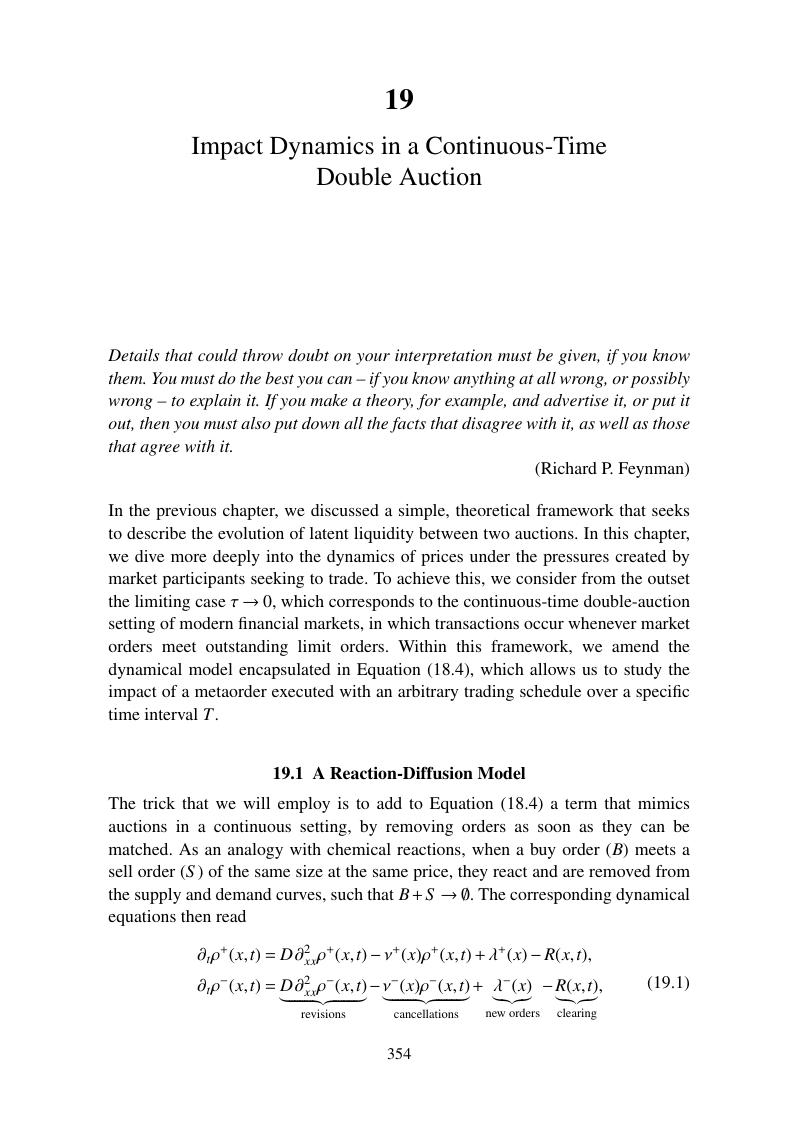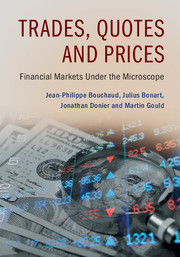Book contents
- Frontmatter
- Dedication
- Contents
- Preface
- Acknowledgements
- PART I HOW AND WHY DO PRICES MOVE?
- PART II LIMIT ORDER BOOKS: INTRODUCTION
- PART III LIMIT ORDER BOOKS: MODELS
- PART IV CLUSTERING AND CORRELATIONS
- PART V PRICE IMPACT
- PART VI MARKET DYNAMICS AT THE MICRO-SCALE
- PART VII ADVERSE SELECTION AND LIQUIDITY PROVISION
- PART VIII MARKET DYNAMICS AT THE MESO-SCALE
- 18 Latent Liquidity and Walrasian Auctions
- 19 Impact Dynamics in a Continuous-Time Double Auction
- 20 The Information Content of Prices
- PART IX PRACTICAL CONSEQUENCES
- Appendix
- Index
- References
19 - Impact Dynamics in a Continuous-Time Double Auction
from PART VIII - MARKET DYNAMICS AT THE MESO-SCALE
Published online by Cambridge University Press: 26 February 2018
- Frontmatter
- Dedication
- Contents
- Preface
- Acknowledgements
- PART I HOW AND WHY DO PRICES MOVE?
- PART II LIMIT ORDER BOOKS: INTRODUCTION
- PART III LIMIT ORDER BOOKS: MODELS
- PART IV CLUSTERING AND CORRELATIONS
- PART V PRICE IMPACT
- PART VI MARKET DYNAMICS AT THE MICRO-SCALE
- PART VII ADVERSE SELECTION AND LIQUIDITY PROVISION
- PART VIII MARKET DYNAMICS AT THE MESO-SCALE
- 18 Latent Liquidity and Walrasian Auctions
- 19 Impact Dynamics in a Continuous-Time Double Auction
- 20 The Information Content of Prices
- PART IX PRACTICAL CONSEQUENCES
- Appendix
- Index
- References
Summary

- Type
- Chapter
- Information
- Trades, Quotes and PricesFinancial Markets Under the Microscope, pp. 354 - 365Publisher: Cambridge University PressPrint publication year: 2018



